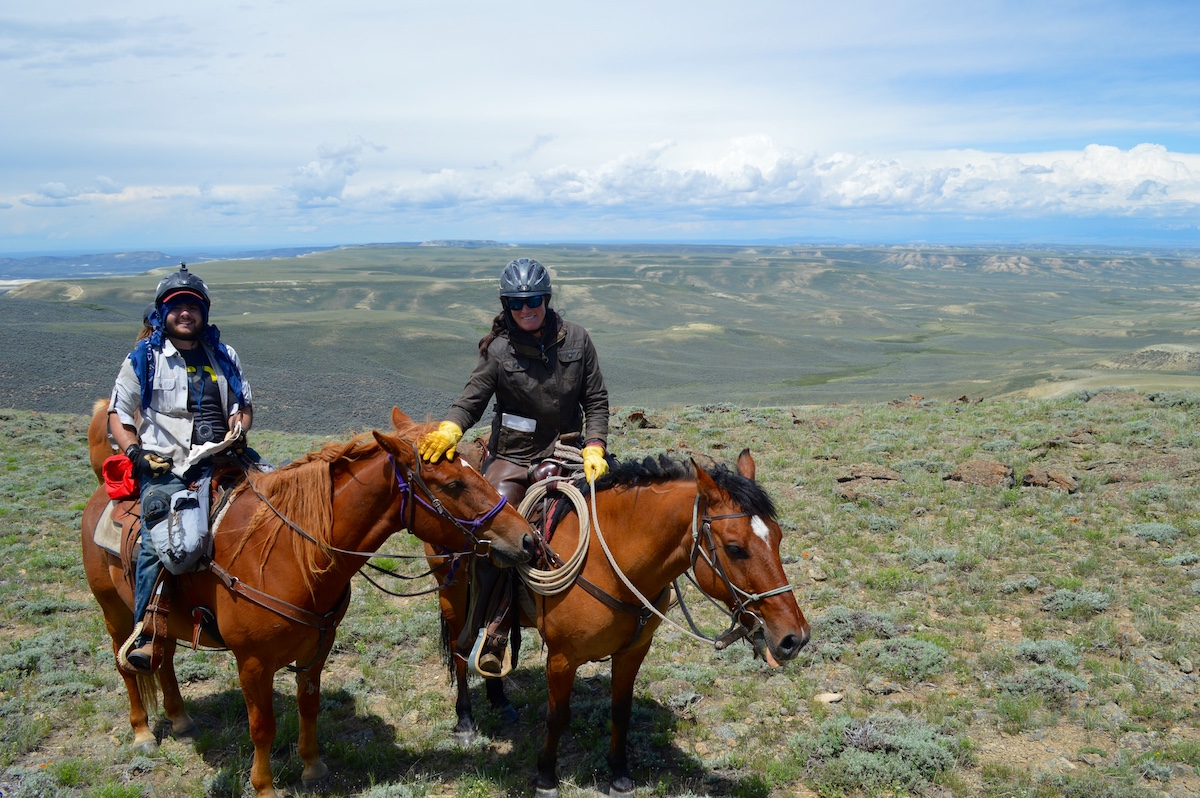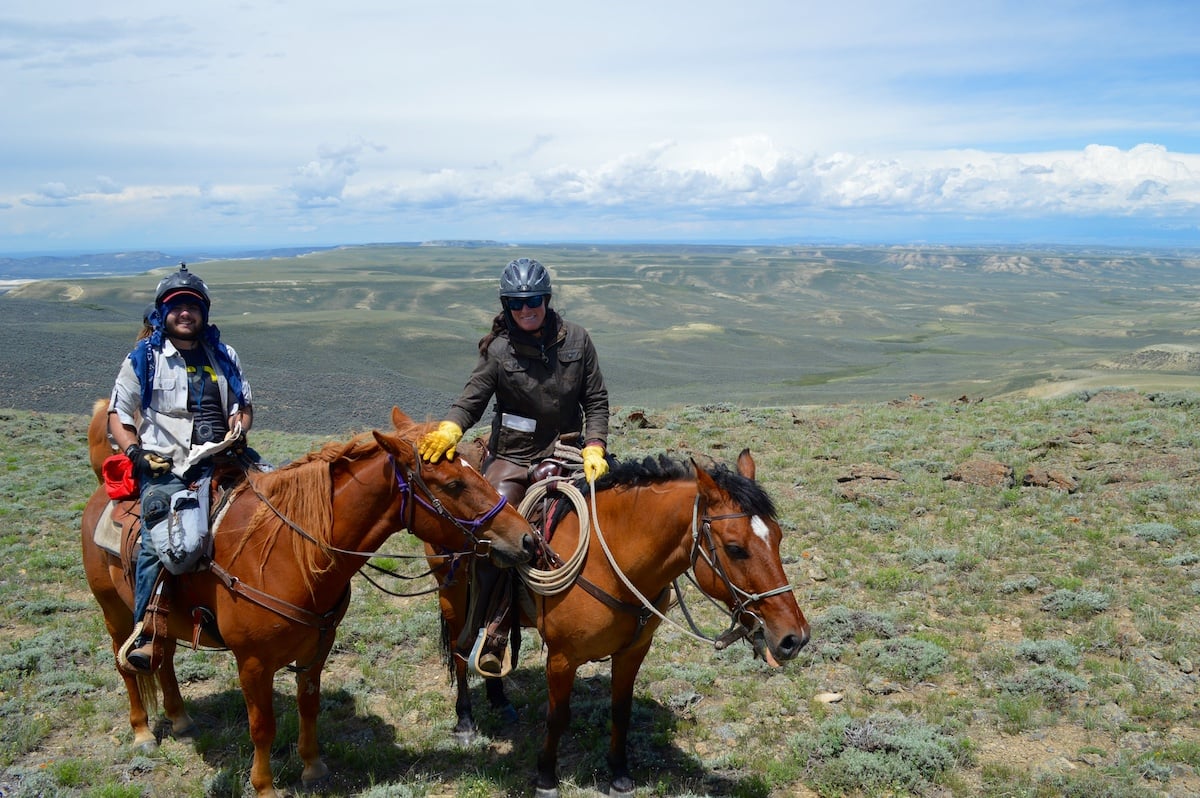You’re one of the leaders of a college outdoor recreation program that is on a hut-to-hut ski trip in the 10th Mountain Division hut system in Colorado. Three days ago, you left the trailhead and skied into your first hut, spending two nights at this hut. You are looking forward to skiing to another hut for two more nights before returning home. One of your participants was not feeling well yesterday afternoon, so you advised them to go to bed early to stay hydrated and rest. You are a 6 mile/10 km ski from the trailhead where your van is parked, the elevation of the hut is just under 10,000 feet/3,000 m, and they attend school in the Denver area (5,400 ft/1,600 m). This morning, you check on how he is feeling.
SOAP Report
Subjective
The patient is a 22-year-old male complaining of a headache, nausea, muscle aches, fever, and chills. These symptoms began yesterday and have persisted through the night.
Objective
Patient Exam
The patient is in his sleeping bag on his bunk. He denies a recent injury. The physical exam is unremarkable.
Vital Signs
|
Time |
0800 hrs |
|
LOR |
A+Ox4 |
|
HR |
72, strong, regular |
|
RR |
14, regular, easy |
|
SCTM |
Pale, warm, dry |
|
Pupils |
PERRL |
|
BP |
Radial pulses present |
|
Temp |
100.3F/37.94C |
History
|
Symptoms: |
Dull headache, nausea, muscle aches, loss of energy and appetite, and occasional mild cough. No diarrhea, vomiting, sore throat, neck stiffness, shortness of breath, or sinus congestion. These symptoms began yesterday and have persisted through the night. No known cause, and other group members are not experiencing these symptoms. Patient does not want to ski today and expresses a desire to leave the field if possible and if it’s not “too much trouble to the group.” |
|
Allergies: |
The patient thinks he may be allergic to “cillin” antibiotics but does not remember a specific event causing this concern. |
|
Medications: |
The patient is not on any regular medications. For this illness, he has been taking ibuprofen 200 mg every 4 hours since noon yesterday. |
|
Pertinent Hx: |
Patient reports having COVID 11 months ago, was fully vaccinated, and most recently, a COVID booster and flu vaccination was three months prior. The patient states that this “doesn’t feel like altitude. I’ve had that before, and it feels different.” |
|
Last in/out: |
The patient ate breakfast yesterday and a small meal last night. He has not had breakfast today. The patient states he has been trying to stay hydrated and drank 3 liters of water yesterday. He urinated clear urine this morning. The patient has not had a bowel movement today but reports he had a regular one yesterday afternoon. |
|
Events: |
The patient has been skiing for three days. This illness began suddenly 24 hours ago. |
What is your Assessment and Plan? Pause here to formulate your answer, then continue reading.
Assessment
The patient appears to have a flu-like illness. He does not yet warrant an evacuation as he does not have a severe headache, respiratory s/s, a high fever, or a persistent fever. He is able to rest and drink.
Plan
We will remain in camp today, allowing the patient to rest and hydrate. We administered an at-home Covid test with negative results. We’ll monitor his condition and make an appropriate decision if his condition changes.
The group will wash and boil all cooking utensils, and everyone will wash their hands on a regular basis. We have asked the patient to wear a face mask when in close proximity to others. We want to keep this illness from spreading in the group.
Anticipated problems
This illness persists or worsens and warrants an evacuation.
The weather, which is currently fine, changes for the worse and complicates the evacuation picture.
Comments
The data NOLS has been keeping on-field medical incidents tells us that flu-like illnesses (colds, upper respiratory infections, sore throat, fever, headaches) are among the most common medical complaints. Together with gastrointestinal problems (nausea, vomiting, diarrhea, constipation), they are 4 of every 10 reported illness incidents.
Often, these illnesses are a viral infection of the nasal passages and throat that causes a runny nose, sore throat, cough, sneezing, headache, mild fever, muscle aches, and malaise. We believe they are most often transmitted by contaminated hands and, less commonly, although possible, as an aerosol. Wash your hands! Cough into your sleeve, not your hand.
These symptoms are common to many different medical presentations and can occasionally be the initial symptoms of more serious clinical conditions. Gastrointestinal symptoms (nausea, vomiting, and diarrhea) are usually caused by a ‘stomach bug’ or ‘stomach flu.’ Respiratory symptoms (cough, congestion, runny nose, sore throat) are usually viral upper respiratory infections, the ‘cold’ or ‘flu.’ All viral illnesses can also cause headaches, malaise, fatigue, low-grade fever, muscle aches, body aches, etc.
The challenge to the wilderness leader is knowing how to manage these and deciding when someone is sick enough to warrant an evacuation. You may have months of experience traveling to the ends of the earth and back, but in contrast, very little experience looking at someone who is obviously sick but without any of the dramatic medical problems you studied in your WFR, such as a pulmonary embolus or a heart attack.
Whether someone stays in the field or goes home depends in part on how much discomfort they are willing to tolerate. We’re often miserable when we have a flu-like illness, and the misery seems compounded when we’re camping. While many of these illnesses are self-limiting, they can linger for days or weeks despite all of our remedies. Our wilderness trips often have timetables—we have places to go and things to see and do—and patience and rest are not on the schedule.
While we know these personal and expedition factors influence our decision to treat people in the field or evacuate, we can base our decision on some guidelines. These are the recommendations from NOLS Wilderness Medicine.
Evacuation is recommended for flu-like illness if:
- Fever persists for more than 48 hrs or is greater than 102°F/39°C.
- The patient develops a stiff neck, severe headache, difficulty breathing, or wheezing.
- Signs or symptoms of pneumonia develop. This is usually associated with increasing shortness of breath, decreasing exercise tolerance, worsening malaise, and weakness with a predominant cough.
- The patient cannot tolerate oral fluids for more than 24 hours, especially if there are diarrhea volume losses, fever, or vomiting.
- The sore throat is in conjunction with an inability to swallow water and maintain adequate hydration.
- The sore throat is associated with a fever or a beefy red throat with white patches.
- The headache does not respond to treatment, is sudden and severe, or is associated with altered mental status.
Treatment Principles For Flu-Like Illness
The management for flu-like illness is based on treating symptoms to help the patient feel better while these illnesses run their course.
Hydration is important, as always, as is hygiene, especially hand washing. These illnesses are communicable, and we want to avoid spreading them throughout the group.
Rest and patience are cornerstones of treatment. Some of these illnesses may respond to antibiotics, but most are self-limiting – they can take a week or more to resolve. Pain medications (Acetaminophen, aspirin, or NSAIDs) for headache and muscle aches are fine.
Decongestants (e.g., pseudoephedrine) and anti-cough medications can treat upper respiratory symptoms. Bland diets are best for gastrointestinal distress.
End of the Tale
Unfortunately, the patient did not get better. Over the next 24 hours, his mild cough worsened, and began to hack up a pale yellow phlegm. His headache persisted despite hydration and ibuprofen, as did his muscle aches and general malaise. The fever stayed at 100F (37.4C). His appetite did not improve, and the nausea persisted. You understand that none of his s/s yet triggered your program's evacuation guidelines, and you would like to wait another day to see if he feels any better. It would be unfortunate to leave the field and this great trip and then feel better in another day. But, at the same time, you are worried about the route ahead, which crosses a high pass and moves much further from the trailhead. The patient is now asking to go home as well. He thinks it is going to take a long time to feel better, and he doesn’t want to be in the field feeling this miserable.
Your decision is to ski him to the trailhead tomorrow. You’re hoping that without a pack, he can manage the six miles. Your support group of five people will be able to react if he is unable to ski.
Written By




